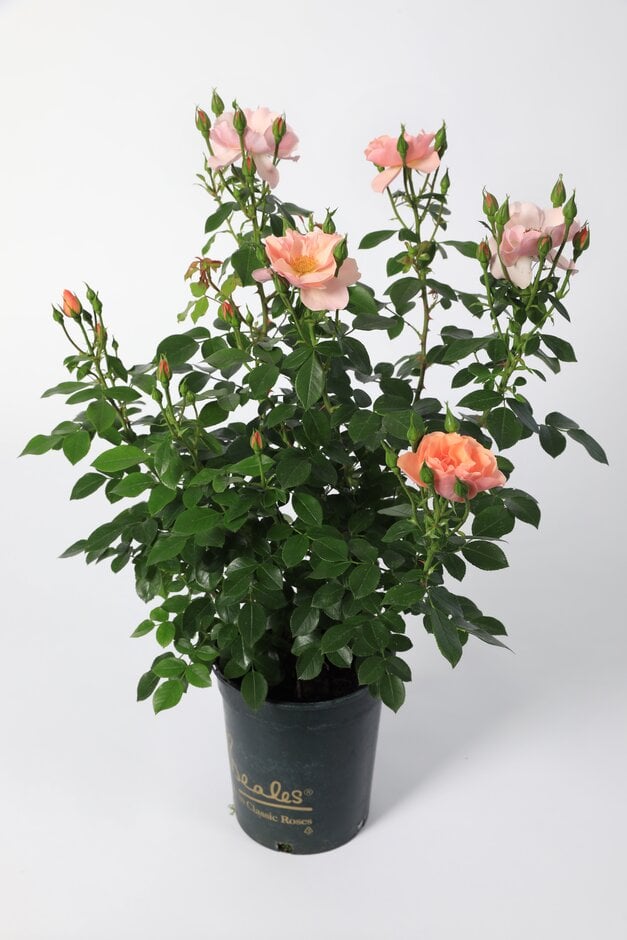Rosa Loyal Companion ('Beaqueen') (Patio)
rose [Loyal Companion]
A compact, bushy patio rose to 90cm high, with small, glossy dark green leaves. Apricot buds open to fragrant, semi-double peach flowers which turn to pale pink then eventually white from summer through until well into the autumn. Makes an idea specimen plant, in a pot or container, or at the front of a flower border
Size
Ultimate height
0.5–1 metresTime to ultimate height
2–5 yearsUltimate spread
0.5–1 metresGrowing conditions
Moisture
Moist but well–drainedpH
Acid, Alkaline, NeutralColour & scent
| Stem | Flower | Foliage | Fruit | |
| Spring | Green | |||
|---|---|---|---|---|
| Summer | Orange Pink White | Green | ||
| Autumn | Green | |||
| Winter |
Position
- Full sun
Aspect
South–facing or West–facing
Exposure
Sheltered Hardiness
H6Botanical details
- Family
- Rosaceae
- Native to GB / Ireland
- No
- Foliage
- Deciduous
- Habit
- Bushy
- Potentially harmful
- Fruit are ornamental - not to be eaten. Wear gloves and other protective equipment when handling. Pets: Fruit are ornamental - not to be eaten - see the HTA guide to potentially harmful plants for further information and useful contact numbers
- Genus
Rosa can be deciduous or semi-evergreen shrubs or scrambling climbers, with usually thorny stems bearing compound pinnate leaves and solitary or clustered flowers. Flowers may be followed by showy red or purple fruits in some varieties.
- Name status
Trade
- Horticultural Group
- Patio roses are small bushy shrubs with clusters of single to double, slightly fragrant flowers about 3cm across, over a long period in summer and autumn
How to grow
Cultivation
Grow in full sun in moderately fertile, humus-rich, moist but well-drained soil, and deadhead to encourage repeat flowering; for more advice, see rose cultivation
Propagation
Propagate by hardwood cuttings in autumn, by softwood cuttings under glass in spring and summer, or by T-budding in summer. Note that roses are usually grafted, so plants grown from cuttings may vary
Suggested planting locations and garden types
- City and courtyard gardens
- Cottage and informal garden
- Patio and container plants
- Flower borders and beds
Pruning
See pruning group 22 (patio and miniature roses)
Pests
May be susceptible to aphids, including rose aphid, the most common rose pest. May also be susceptible to rose leafhopper, glasshouse red spider mite, scale insects, caterpillars, large rose sawfly, rose leaf-rolling sawfly and leaf-cutter bees. Deer and rabbits can also cause damage
Diseases
May be susceptible to rose black spot, rose rust and rose powdery mildew, canker, crown gall, honey fungus, downy mildews, and virus diseases, and to replant disease and rose dieback
Get involved
The Royal Horticultural Society is the UK’s leading gardening charity. We aim to enrich everyone’s life through plants, and make the UK a greener and more beautiful place.
